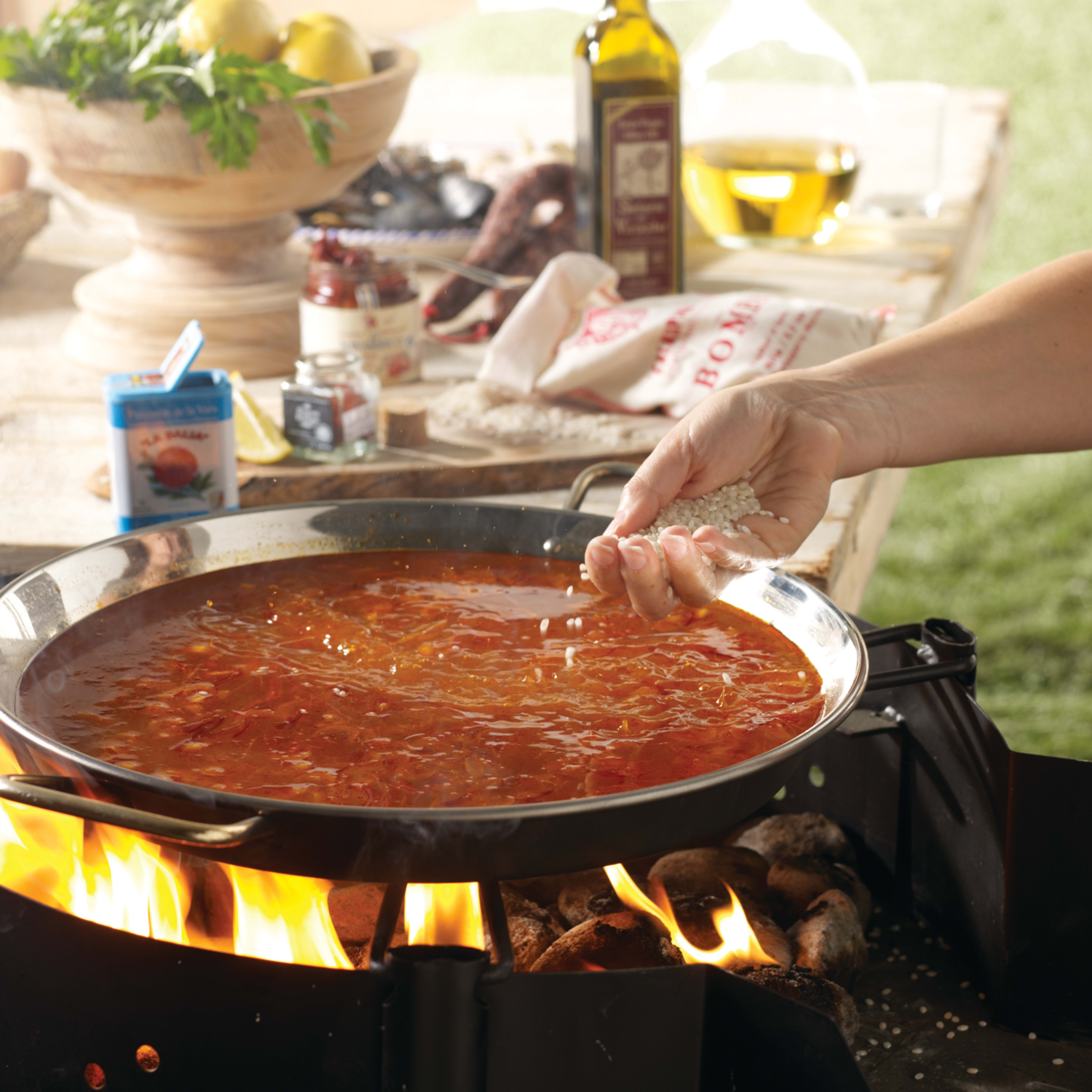How to Choose a Paella Pan
Jonathan Harris | January 2004

Choosing the right paella pan can seem a bit overwhelming, but it is pretty straightforward once you figure out a few key facts.
1. What size paella pan should I choose?
Paella pans range in size from little single portion pans to ones that are several feet wide and can feed over 100 people. Thankfully we show you the number of servings you can get out of each pan on our website. We recommend getting a pan that is a little larger than the number of people you want to serve because paella leftovers are delicious!
A paella pan size refers to the distance between the top lips of the pan. The handles extend beyond the nominal size of the pan.
One restriction on size depends on what cooking surface you plan on using. A stovetop burner will accommodate pans under 20 inches, but 15 inches is the sweet spot for full heat coverage. Ovens are generally too small for any pan under 17 inches, but we would recommend you measure the interior of your oven to be sure.
If you want to feed a crowd and need a large pan, you will need to use a propane paella grill or a steel tripod if you want to cook over an open fire. If you still want to cook on your stovetop, an option is to get multiple small paella pans and cook them separately on the smaller heat source.
One note – if you are buying a large pan, get out a tape measure and get a sense for how large it really is! We get a lot of returns because people order a pan that is much bigger than they realize.
2. Which type of paella pan is right for me?
We offer four types of paella pan, each with its benefits and drawbacks.
Carbon steel paella pans are the type most commonly used in Valencia. They are affordable and conduct heat very well, and they absorb the flavors of paella over time. On the other hand, they discolor almost immediately upon use and can rust if not cared for properly.
‘Pata Negra’ paella pans are double thick carbon steel. They have all of the attributes of a regular carbon steel pan but they are thicker which helps them retain heat and protects them from warping.
Enameled steel pans are basically carbon steel pans coated with black enamel. This prevents rust and makes it easy to clean. Enamel can chip with use, but overall this is a durable and affordable option.
Stainless steel pans are attractive, with a shiny finish and gold-plated handles. They are easy to clean and make for a beautiful presentation. On the downside, they are more expensive and should not be used with metal utensils or cleaning tools.
3. Can I cook paella over charcoal on the grill?
Cooking paella on the grill is fun, but you need to make sure your pan can fit on a grill. Our paella grill systems allow you to cook with charcoal or wood, as well as with a propane burner. It can be a bit challenging to manage the heat from a charcoal bed and you can end up burning the paella if you are not careful. That is why I prefer to cook paella over a propane burner so that I can adjust the heat with the turn of a knob.
4. How do I care for my paella pan?
Before initial use, add a small amount of water to the pan and heat on the stove to remove the protective coating and any stickers, dumping the water and repeating several times. Next, wash the pan with hot soapy water. Dry thoroughly.
Different pans require different levels of care. Carbon steel paella pans, including ‘Pata Negra’ pans, need to be washed, quickly dried and coated with a neutral oil after each use to prevent rust. If a pan does pick up rust, you can scrub it off with steel wool before you use it again. Store it in a dry place away from humidity.
Stainless steel paella pans require wood or plastic utensils and washing tools to avoid scratching the surface. They should be washed by hand.
Enamel paella pans are the most durable. Be careful to not treat them too roughly which can cause the enamel to chip, but this is mostly cosmetic and does not affect the performance of the pan.
Related Articles

